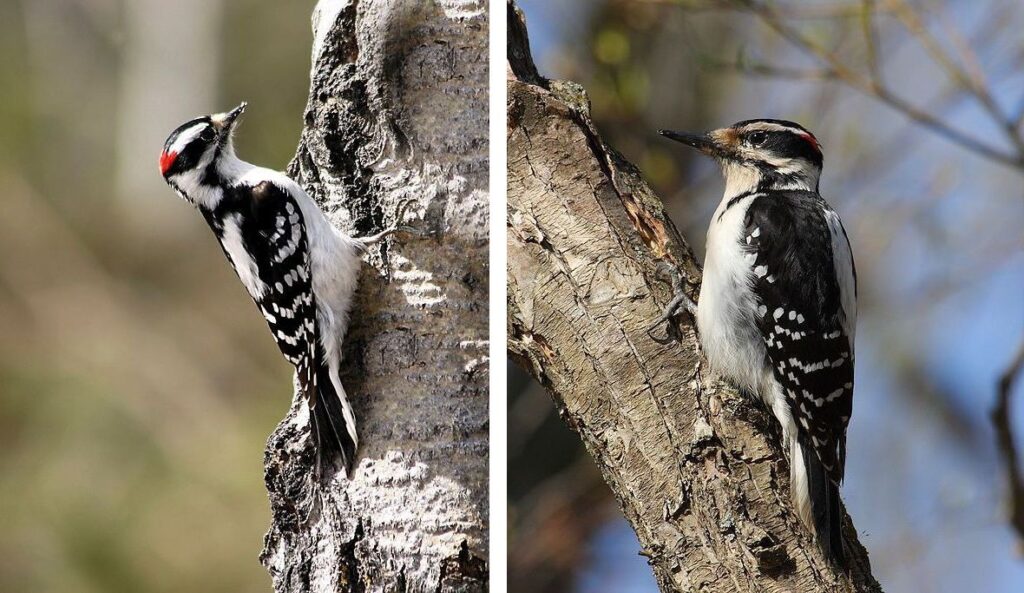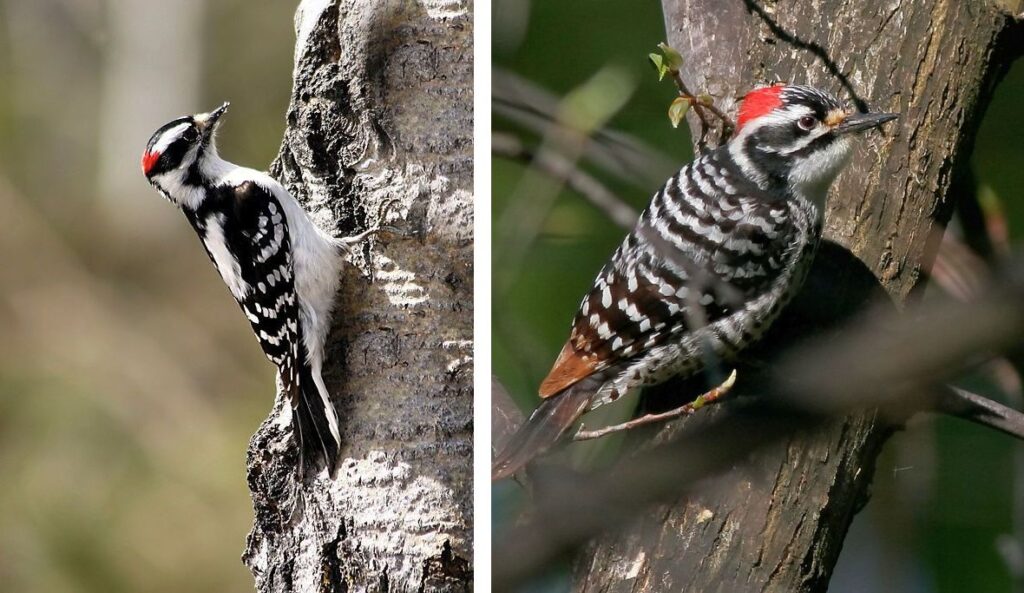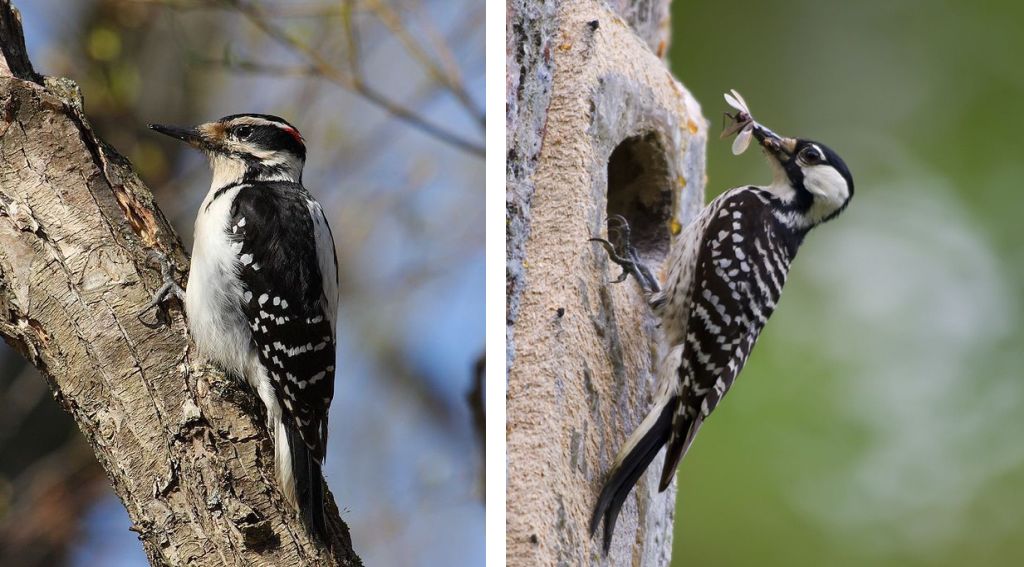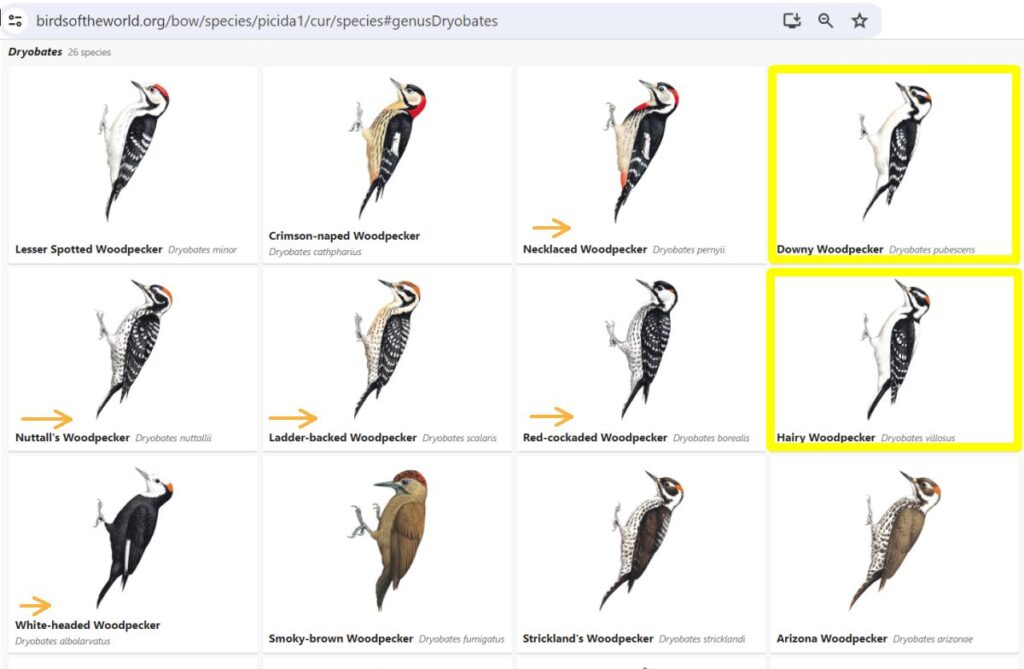
7 December 2020
Two common birds in Pennsylvania, downy and hairy woodpeckers, are so similar that they’re hard to tell apart. Downy woodpeckers are small and hairys are large but if they’re not side by side there’s just one major clue:
- Downy woodpeckers have short beaks, one third the length of their heads back-to-front.
- Hairy woodpeckers have long beaks, same length as their heads back-to-front.
Frank Izaguirre (@BirdIzLife) tweeted this recent backyard photo of both birds:
I think this is the first time I’ve ever gotten the true side-by-side with both birds within a foot of each other. The downy’s bill looks weird because it has a sunflower seed in it. pic.twitter.com/ilexbvIOiD
— Frank Izaguirre (@BirdIzLife) December 5, 2020
Because of their similarity you’d think downys and hairys are close cousins but they’re not. A study published in April 2019 explains why they look alike, described in Living Bird:
Despite being look-alikes these two species are not that closely related. Their genetic lineages split off from a shared ancestor over 6 million years ago—about as far back as chimps and humans split.
A new study published in April in the journal Nature Communications provides strong evidence that Downy and Hairy Woodpeckers are an example of “plumage mimicry”—one species of bird evolving to match the plumage patterns and colors of another.
— Living Bird: Are woodpeckers evolving to look like each other; a new study says yes
In fact, the downy woodpecker (Dryobates pubescens) is more closely related to Nuttall’s woodpecker (Dryobates nuttallii), native to California.

And the hairy woodpecker (Dryobates villosus) is more closely related to the red-cockaded woodpecker (Dryobates borealis), a Near Threatened species of mature southern pine forests.

They don’t look like their near relatives. They look like each other.
So don’t feel bad if you can’t tell downy woodpeckers and hairy woodpeckers apart. They are mimics.
See how many other woodpeckers are mimics at Living Bird: Are woodpeckers evolving to look like each other; a new study says yes.
p.s. Here’s a Birds of the World diagram that shows the woodpecker relatives that intervene between downy and hairy. Downy and hairy are both woodpeckers are in the genus Dryobates. The downy woodpecker is the fourth in sequence (end of top row), then three woodpeckers come next followed by the hairy woodpecker (end of second row).

(photos from Wikimedia Commons; click on the captions to see the originals)

Small and downy, big and Hairy! This is how I learned how to identify these woodpeckers. So easy to remember.
Kate, did someone go up to assess the damage to the nest box at the CoL? I see that the roof debris has been removed from the box, and also the old eggs.
Yes, just this morning. Measured for the roof replacement, which will happen in a week or three.
Interesting. The piece at the Cornell link didn’t mention whether other birds besides woodpeckers exhibit plumage mimicry. Regardless, the fact that eBird data shows a strong correlation between similar plumages of distantly related birds and their overlapping ranges is pretty fascinating. Thanks for the post!